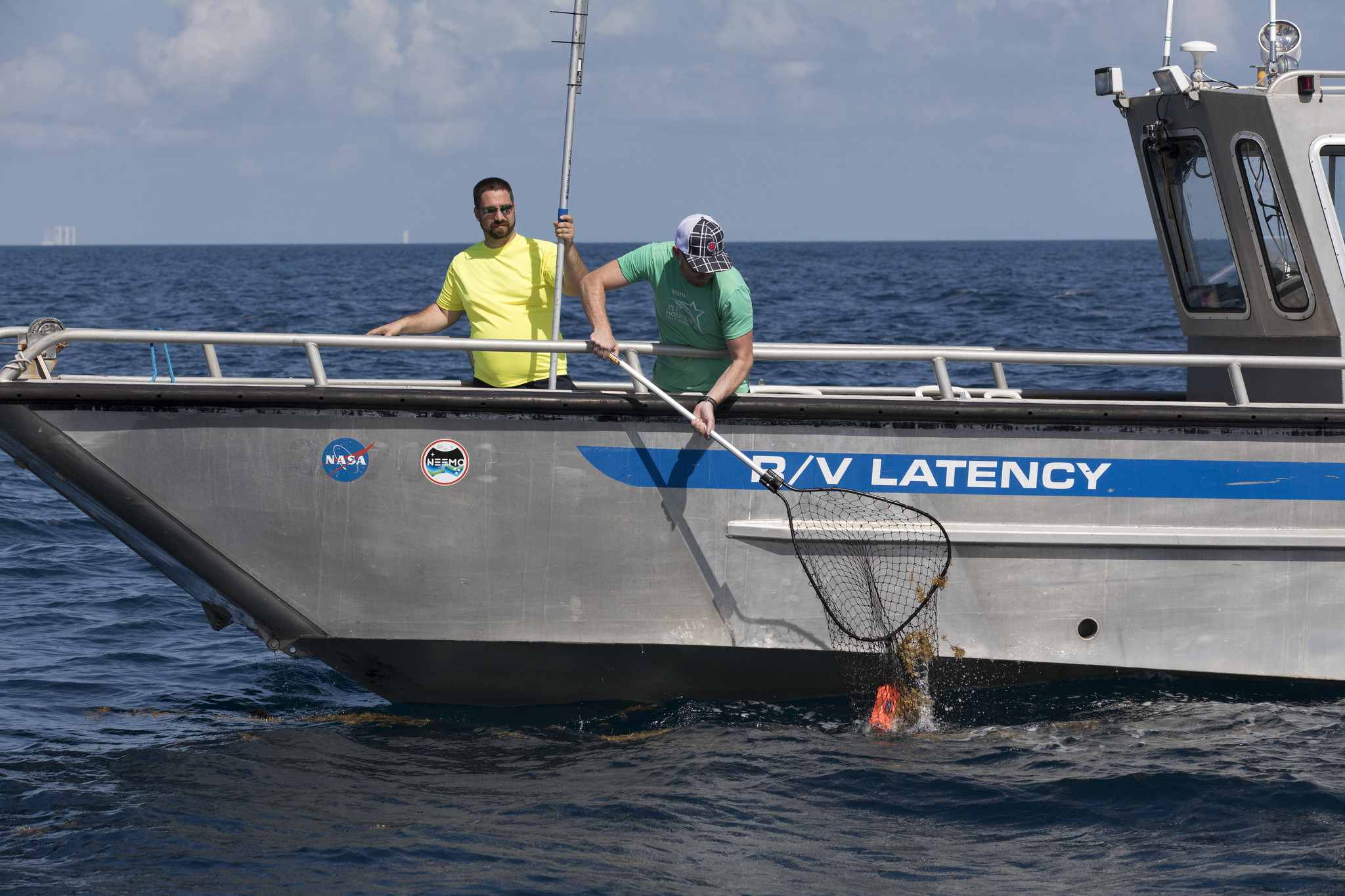
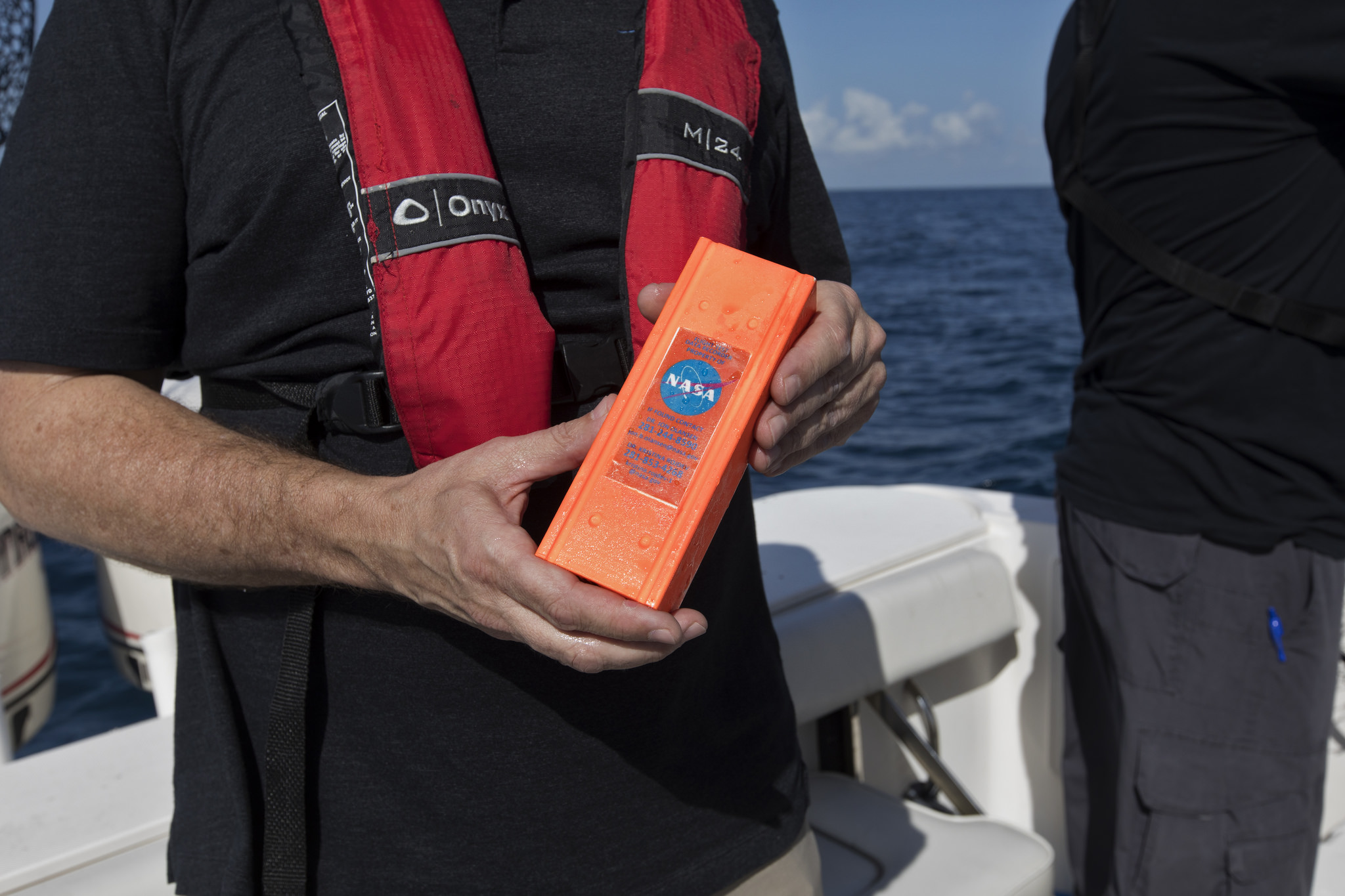
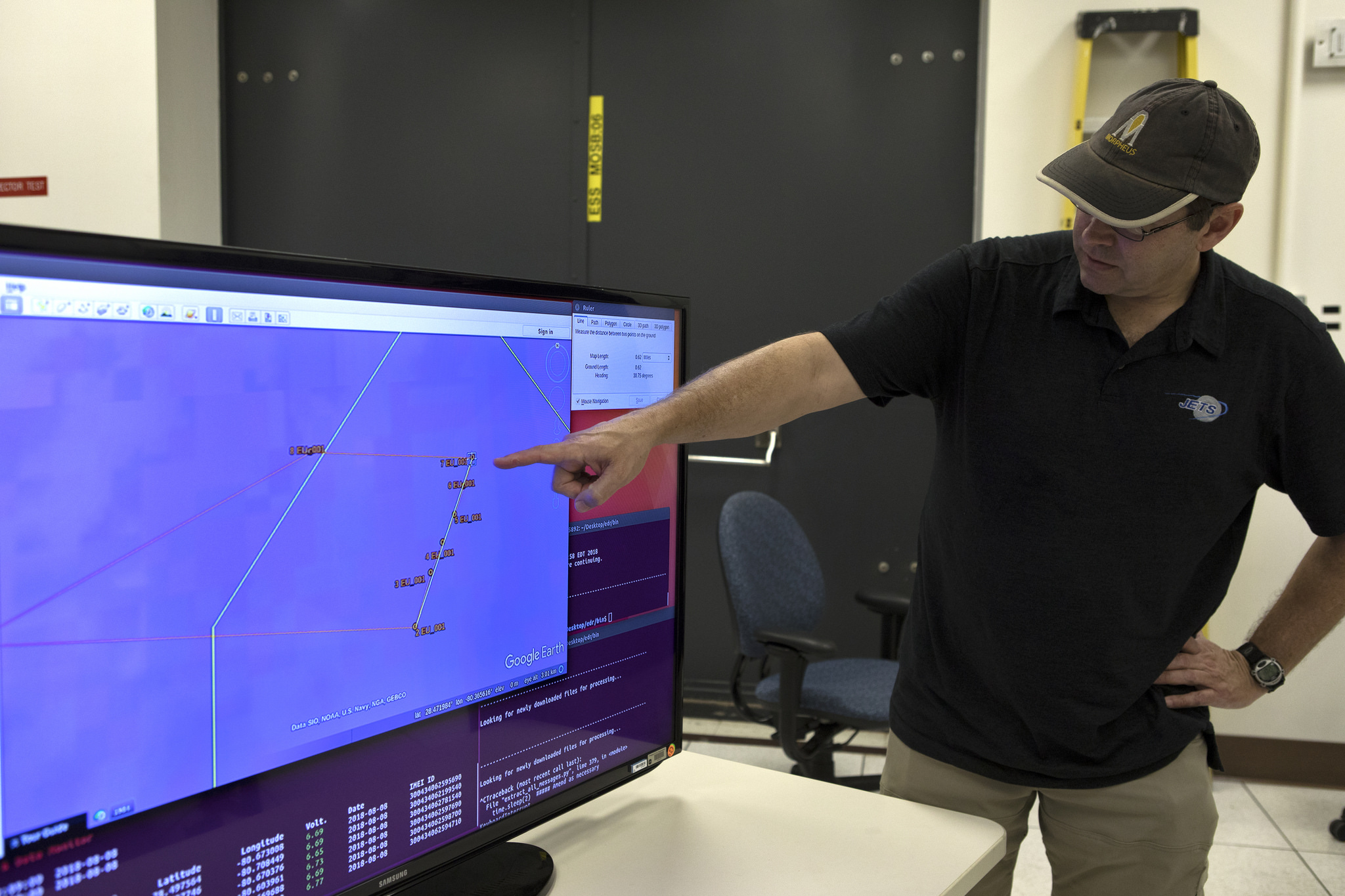
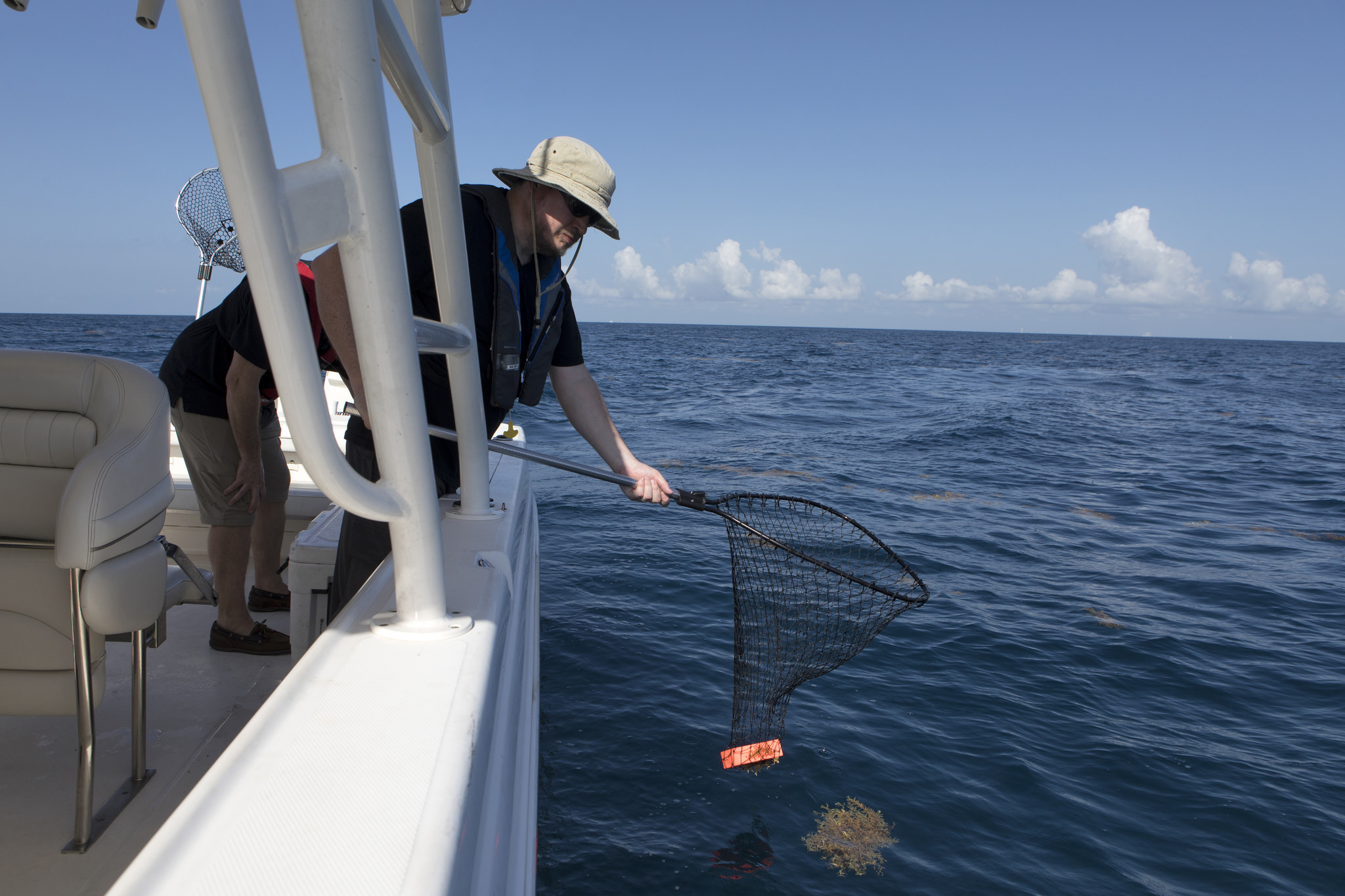
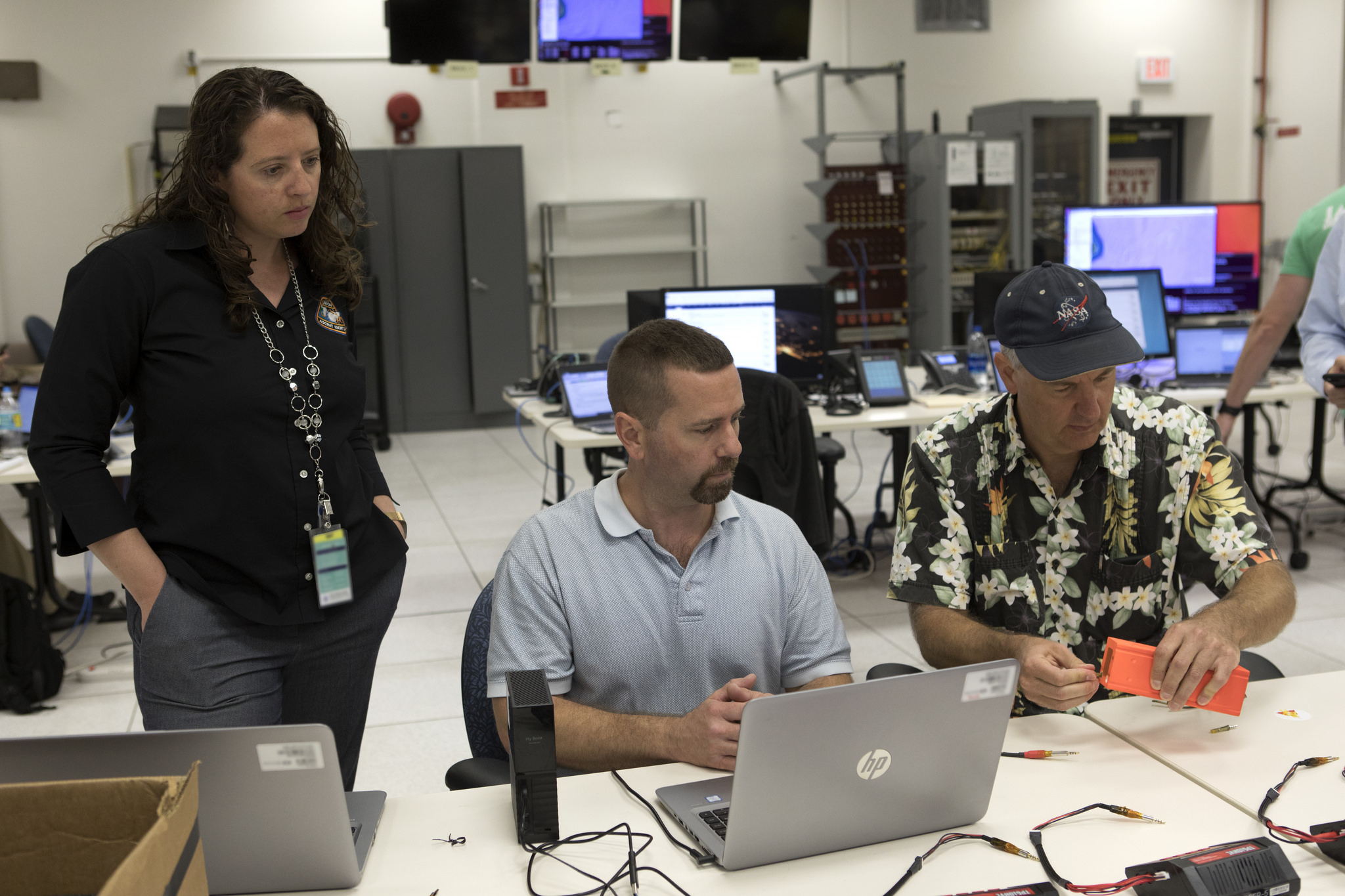
By Jim Cawley
NASA’s Kennedy Space Center
NASA just successfully tested the approach to collect and retrieve valuable data in support of an upcoming test of the abort system for the agency’s Orion spacecraft.
Engineers developed ejectable data recorders that will collect data for the abort test, which is meant to evaluate Orion’s ability to get astronauts safely away from the rocket if there is a problem during their climb to space. By ejecting the recorders before the Orion test article hits the water, the team can quickly and efficiently recover the recorders for faster access to the data without having to recover the spacecraft and extract the recorders.
During a recent drop test, the recorders were released from a helicopter 5,000 feet in the air and splashed into the Atlantic Ocean off the coast of NASA’s Kennedy Space Center. The floating devices were then located through beacons transmitting GPS coordinates and scooped up with fishing nets by NASA personnel operating marine boats.
Recovery of the six recorders took less than an hour, which is about two hours shorter than predicted, according to the drop test conductor David Petri, from NASA’s Johnson Space Center in Houston, where the Orion program is based.
“The test was fantastic,” Petri said. “We met all of our test objectives, which were to verify that the recorders survived the water impact and salt water environment, functioned as intended and broadcast their location so that they could be retrieved, and ultimately verify that the data could be downloaded from the recorders with no losses or errors.”
The drop test is a precursor to the Ascent Abort-2 flight test planned for April 2019 at Cape Canaveral Air Force Station. During this uncrewed event, 12 data recorders will be ejected from an Orion test article and will provide NASA engineers with information about g-forces, temperatures and pressures that astronauts would experience if the LAS was activated.
Ascent Abort-2 will test the launch abort system during ascent, where it will encounter the greatest structural stress. A previous test, called Pad Abort-1, tested an abort scenario from the launch pad. AA-2 will be the final test of the fully active launch abort system before crewed missions.
“The data is going to tell us the forces the astronauts will encounter if they do go through an abort during ascent,” said Carlos Garcia, the LAS Orion production lead and Flight Test Management Office representative for Kennedy. “The test that we just did ensures our confidence that we can obtain and retrieve that data.”
In the AA-2 flight test, the abort sequence will initiate 55 seconds after launch at 31,000 feet. After the abort motor fires to pull the crew module away from the launch vehicle, the attitude control motor will reorient the LAS to safely separate from the crew module. The LAS will then separate from the crew module using its jettison motor. The data recorders will then be ejected from the crew module, concluding the test.
Assembly operations for the abort test are ongoing at Kennedy, and the Orion test crew module that will be used will arrive at Kennedy in December. It will undergo final integration and checkout and then be mated with the Launch Abort System. Finally, the vehicle will be transported to the launch pad and mated with the booster for the AA-2 flight test.
NASA is leading the next steps of human exploration into deep space with its Orion spacecraft that will be launched atop the Space Launch System (SLS) rocket. Together Orion and SLS will be the critical backbone capabilities that will carry humans to the Moon and extend human exploration farther into space than ever before.
“It’s a huge undertaking,” Garcia said. “A lot of us don’t realize how important this is because we do the day-to-day work. But when you take a step back and look … I think our country realizes how important it is to get back flying again.”


























